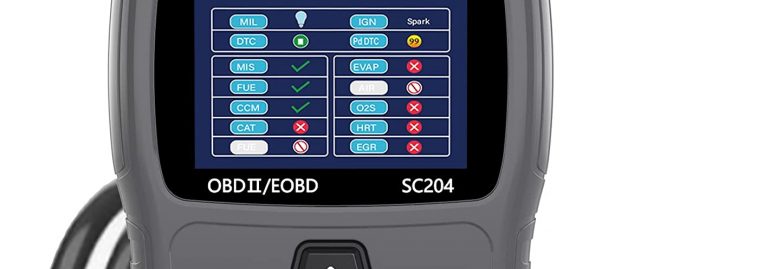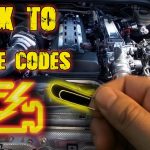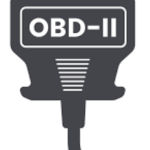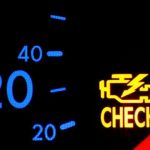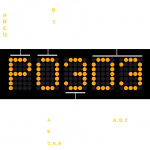It is possible to learn to read car codes, even if you don’t have a mechanic. Usually, they can read them for free. However, you should be aware of your car’s make and model, so you can find the appropriate codes and solve your problems. In this article, we will discuss some common codes, including OBD2, SAE, and Manufacturer-specific codes. We will also discuss P codes and trouble codes.
OBD2
When you notice an odd noise coming from your vehicle, the most likely culprit is the OBD2 car code. While these are essentially “mystery codes,” they can be solved by yourself without the assistance of a mechanic. The OBD2 car code reader app can help you to decode the codes and diagnose the problem quickly. Its database of over 40,000 car codes is the largest in the world, and it supports all major automakers.
The 3030RS is one of the best OBD2 car code readers on the market today. Its unique all-in-one display shows over 20 pieces of information at once, making it easy to pinpoint the problem in your vehicle. It also has a unique freeze-frame feature that lets you see a snapshot of what your car looked like immediately after a trouble code was generated. This feature is particularly helpful if you’re not a mechanic or have an inexperienced technician.
OBD2 car codes come in different categories. There are generic codes and manufacturer-specific codes. Global codes are universal, meaning they are used by most cars that follow the OBD2 standard. The generic codes are referred to as “generic” codes, while manufacturer-specific codes are specific to a certain vehicle model. In some cases, manufacturers can also add their own codes, such as P30-P33. Some of these codes can be used to troubleshoot a problem and diagnose the issue.
SAE
If you have trouble reading your SAE car codes, you’re not alone. Most carmakers use a set of codes that are specific to their vehicle model, and the standardized list is called SAE J2012-DA. This code set contains standardized DTCs and Failure Types. The standard sets three-byte codes as the default and applies to almost all vehicles. The SAE J2012-DA code set also contains some additional subtypes of DTCs.
The first number in an SAE J1587/J1708 code is MID (Message Identifier), which indicates the source of the problem. Every car component has its own MID, such as engine and radio signals. The SAE J1587/J1708 code system uses MIDs to specify which components have specific problems, and some manufacturers even use proprietary MIDs. For instance, the MID 128 and SID 6 on a SAE J1939 code indicates the engine and transmission systems.
The SAE has set the standards for many products in the automotive industry. You can also look for SAE car codes on the side of your vehicle. They are stamped on the side of your car, and you’ll likely find this stamp on some tool or motor oil. It’s also used to set the standard for horsepower ratings. The SAE was founded in 1905 to establish uniform automotive standards and to provide a forum for industry interaction.
Manufacturer-specific
What are Manufacturer-specific car codes? In the automotive industry, codes can be used to identify a car’s problem. These codes are usually located on a metal plate stamped into the body of the vehicle. There are both generic and manufacturer-specific codes. In general, the first digit of the code indicates the type of problem. The next digit indicates the area of the car impacted by the problem. Examples of areas affected by these codes include the auxiliary emission control, ignition, and misfiring.
The first part of the manufacturer-specific car codes is the type of fault. A fault with the obd interface, also called OBD-I, may require the intervention of a mechanic. Typically, an obd-I code will be a “P0128.” This error code indicates that the engine coolant temperature is below the thermostat-regulated temperature. While the error may not be caused by the engine, it will indicate a problem with the fuel and air metering subsystem.
The other parts of a manufacturer-specific code are the engine, transmission, and drivetrain. Powertrain codes cover the engine and associated drivetrain accessories. Network and vehicle integration (NVI) codes are used for cars that share some common computer systems. Manufacturer-specific codes will be labeled as such. The first digit of the trouble code will indicate whether the error is generic or manufacturer-specific. This information is vital when it comes to fixing a problem with a car.
P codes
To understand how to read car P codes, it helps to know what the trouble code is for your vehicle. This code is generated by your car’s computer and can be found on various systems. The first digit in a code indicates whether it is generic or manufacturer-specific. The next digit identifies the system in question. It may be the transmission, the engine, or auxiliary emission control. The fourth digit indicates the exact problem for the specified system.
The second character of a DTC is a digit and ranges from one to eight. The fifth character is a two-digit number between 0 and 99. This number represents a specific problem within the vehicle. If you want to learn how to read car P codes, check out an online resource for free auto repair manuals. You can also download specific diagnostic codes from the internet. The information in these codes will be helpful in fixing your vehicle’s problem.
There are two types of trouble code in your car: the Active Code, and the Pending Code. The Active Code refers to the malfunction which keeps the Check Engine light on. The Pending Code indicates that the error has occurred at least once, but will become an Active Code if it happens again. The P codes are a way to diagnose a malfunction on the on-board computer system of your vehicle. They contain detailed information about the problem and how to fix it.
P0100 to P0199
The P0100 to P0199 car codes are indicative of a faulty Mass Air Flow sensor or circuit. The PCM detects the problem based on the frequency signal or value of the MAF sensor. Some MAF sensors also incorporate an air temperature sensor, which the computer uses to optimize the engine’s operation. If your vehicle is showing any of these symptoms, you should see a certified mechanic.
Trouble codes P0100 toP0199 indicate a malfunction in the emissions control system. These sensors send vital data to the ECU which controls the amount of fuel to present in the intake air. Vehicles with these codes are manufactured after 1996. While identifying these codes can be tricky, it is important to know what they mean. Here are some common symptoms:
A code containing P0100 toP0199 is the result of a malfunction in an electronic control unit. These computer systems are responsible for monitoring the engine’s performance and drivability. If your P0100 to P0199 code is present, you should consult a mechanic or the owner’s manual. An owner’s manual will tell you how to diagnose the issue, including what parts to replace and what to repair.
Carly app
The Carly app is a Bluetooth device that can read car codes. To connect to your car, you can use the three-step process explained here. The first step is to plug in the Carly device to the car’s OBD port, which is typically found under the dash near the steering wheel. You can then pair the Carly device to your smartphone via Bluetooth Low Energy. Once paired, the app will begin scanning your car’s diagnostics.
The Carly app displays fault codes in a color-coded analysis, with’red’ problems indicating the most serious of problems. It also shows you simple maintenance tasks, such as checking the oil or fuel level, and tracks the regeneration of the diesel particulate filter. By interpreting fault codes and providing an immediate visual representation, the app makes it easy to diagnose and resolve potential problems with your vehicle. It is also easy to use for beginners as it will highlight any common problems.
The Carly app is compatible with most car brands and models, but its features depend on the model of the vehicle. The OBD2 port in your car makes the device compatible with most mobile devices. It also comes with an app that allows you to read car codes from your phone using the Carly OBD2 scanner. It’s free to download, so you can test out the most important functions before spending money. You’ll be surprised at how intuitive the app is.
OBD code reader
OBD code readers are the simplest way to check the status of your vehicle. The OBD port is typically under the dash, under the steering column, or somewhere else in the car. The reader works with the car’s computer, and you’ll find that there are several codes displayed on the screen. There are several ways to use one, and some are more complicated than others. Before you get one, it’s important to learn about the codes.
An OBD code reader works by reading and writing down trouble codes from your car’s computer. It can identify several common faults, such as oil pressure problems or spark-plug misfires. The scanner also allows you to pull your vehicle’s vehicle identification number from the internal computer, which will help you determine the cause of any problems. OBD code readers can save you hundreds of dollars a year on car repairs and maintenance.
There are different kinds of OBD code readers. Some require you to input the manufacturer of your car, while others don’t. If you can input the details of your car, you’ll be able to find the best OBD code reader for your vehicle. These scanners will also allow you to view the different types of OBD codes. The first type of OBD code reader can help you determine which fault code your vehicle has.


